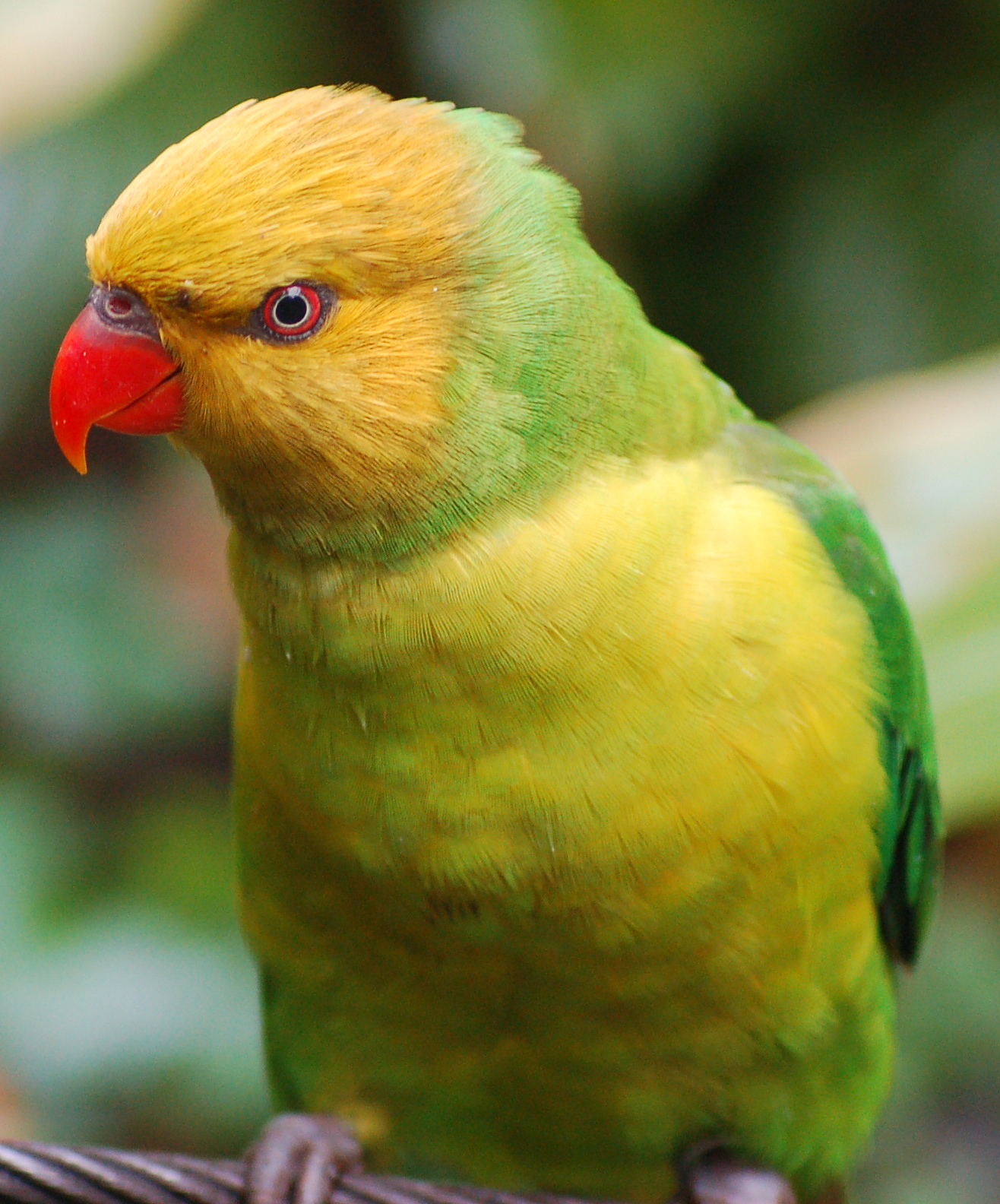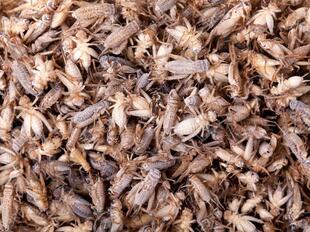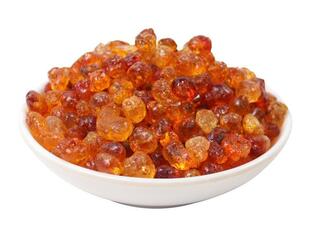
Olive-headed lorikeet, or Perfect lorikeet(Trichoglossus euteles)
Phylum —chordata
Class — aves
Order — psittaciformes
Family — psittaculidae
Genus – trichoglossus
Appearance
Adults average 9.75 inches (25 cm) in length and 2.8-3 oz (80-85 g) in weight.
The adult plumage is generally green with an olive/yellow head. There is a pale green collar around neck. They have a yellow stripe under the wing. The bill is orange/red and the eyes are red.
Juvenile birds have green / olive heads, lightly streaked with paler green. The bill and the eyes are brown.
Habitat
Olive-headed lorikeet is commonly found in a small region that mostly covers the island of Timor and a few other, smaller islands in the Lesser Sundas, close to Indonesia.
Behavior
The olive-headed lorikeets live in small groups. They are especially visible when they are in flight because they emit continuously shouts.
This birds are territorial, able to show great aggressiveness if the limits of its area of influence are violated.
Diet
In the wild, these parrots are known as a primarily nectar-feeding bird. They also thrive on a diet of seeds, flowers, fruits, and insects.
Reproduction
Lorikeets tend to be nomadic and breed year-round, wherever and whenever trees and other plants are sufficiently in bloom to support the extra demands of rearing hungry families. Peak nesting tends to occur in the wet season, when the trees and shrubs come into flower. Because they do not have a well-defined breeding season, lorikeets pair for life: this way they are ready to breed anytime conditions are favorable. The courtship display includes some wing-fluttering to reveal the colorful underwing pattern, swinging upside down, head-bobbing, tail-fanning and bill-fencing. The monogamous, life-long breeding pair builds their nest in a deep, unlined hole in the limb or trunk of a large tree. The female lays 1-3 eggs, and the young hatch in around 25 days.
In captivity
In captivity olive-headed lorikeetcan live for up to 30 years.
A well-balanced personality and affectionate behavior are often what parrot owners look for in a pet. This is why many decide on a Perfect lorikeet to be their feathery companion. Lively and friendly, these parrots are fun to be around. They tend to adore tricks, learning them with ease. You should encourage this mental stimulation, and also provide them with a lot of parrot toys, bells, and swinging ropes. You will also notice their great intelligence. They react hilariously to music, bobbing their heads, or dancing in their own peculiar way.
Just like their physical appearance, their health is also stout and robust. If you prevent basic threats, like drafty and damp places, high or low temperatures, or neglect in the form of lacking social interaction, you will be satisfied with the endurance and good health of your pet.
There are few brands of commercial nectar that should be the basis of their diet as a pet, but the homemade version can work as well. This diet needs to be enriched with a lot of fresh fruits and vegetables.
Perfect lorikeets are one of those parrot breeds that really enjoy bathing and moisture. You should give them bathing dishes, water sprays or quick “showers”. This will also ensure optimal hygiene and minimize the threat of feather-borne disease.
 Russian
Russian
 English
English


















